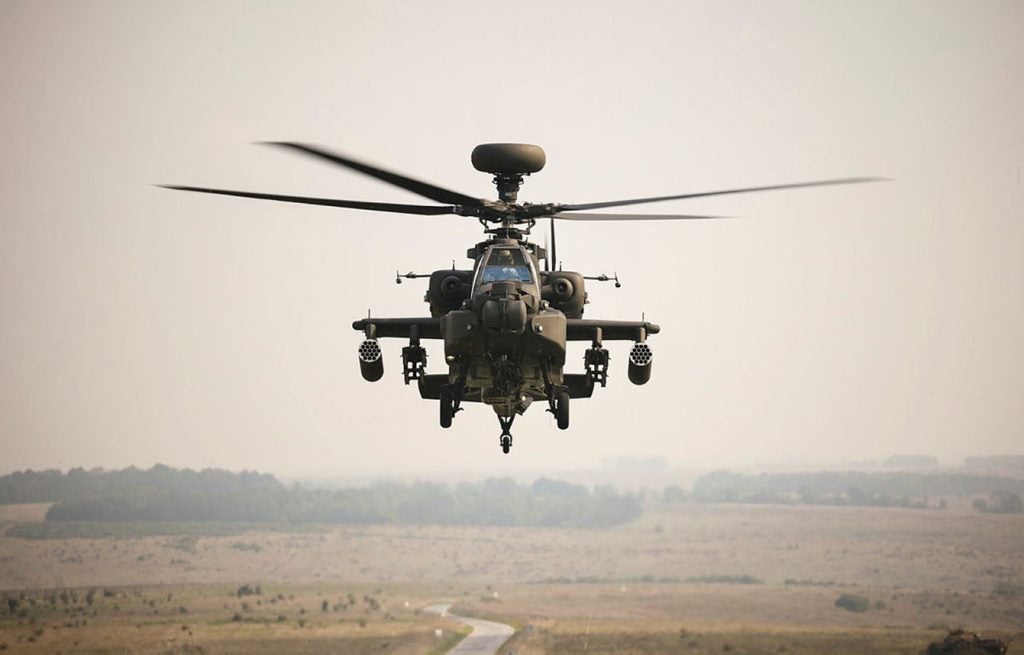
The UK Ministry of Defence (MoD) is in the process of testing the exhaust emissions of in-service helicopters.
An investigation took place in response to a string of common law claims from service people alleging adverse impact from fuel and fumes going back to 2019, according to a senior government official in a parliamentary written response on 26 November 2024.
“Without any admission of liability,” they stipulated, the MoD has made five compensation payments worth more than £3.5m ($4.4m) since 23 April 2023. As of 14 November 2024 there are six related, continuing compensation claims.
In conducting the tests, the government aim “to ensure we are meeting our duty of care for personnel. It is essential that we can assure our people of their safety at work.”
UK rotorcraft in figures
The British military operate a range of helicopters for different operations, such as the new AH-64E Apache attack helicopter (Army); the multi-role Wildcat (Army, Navy); CH-47F Chinook (Air); and Merlin (Navy) among several others, including some approaching obsolescence such as the Puma (Navy).
According to the UK government, there are 294 rotary-wing aircraft across the armed forces as of April last year. The forces have 15 more units than in 2022, which is said to be due to the delivery of several Apaches, bringing the Army to initial operating capability in May 2023.
How well do you really know your competitors?
Access the most comprehensive Company Profiles on the market, powered by GlobalData. Save hours of research. Gain competitive edge.

Thank you!
Your download email will arrive shortly
Not ready to buy yet? Download a free sample
We are confident about the unique quality of our Company Profiles. However, we want you to make the most beneficial decision for your business, so we offer a free sample that you can download by submitting the below form
By GlobalDataNotably, there are no recent statistics for the 2024 equipment and formations list. An up-to-date assessment has been delayed to January 2025 due to a ‘data quality review’ potentially related to the wider Strategic Defence Review set to be released by the spring of next year.
Nevertheless, the statistics tell us that 193 (75%) were ‘in-service’ compared to 79% in 2022. Of these active units, the Chinook is the most common rotary platform with 59 helicopters.

Proactive approach to safeguarding UK personnel
Since the new Labour government have entered office for the first time in 14 years, the Secretary of State for Defence, John Healey, has been leading a new campaign to deliver the interests of UK personnel, their families and their wellbeing.
A flurry of new policies are coming to the fore supporting service people in what the government have described as a new Armed Forces Covenant. Among them, the creation of an independent Armed Forces Commissioner, a bill for which was introduced to the House of Commons on 6 November.
The Commissioner’s remit will consider, investigate and make recommendations to address welfare issues.
This new independent body will keep the MoD accountable and, crucially, advocate through a more proactive approach rather than a responsive one when it comes to issues such as service people’s longer-term exposure to harmful materials and situations such as helicopter fumes.
In July, the British security think tank, the Royal United Services Institute, noted that defence is, under normal conditions, far more tolerant of risk than the National Health Service. While a 1% lifetime risk of cancer from an exposure is ‘high’ in healthcare, but a ‘remote chance’ in defence intelligence parlance.



